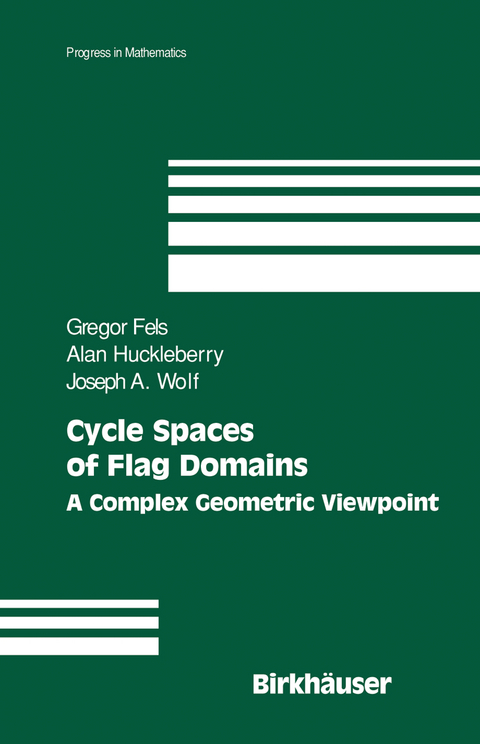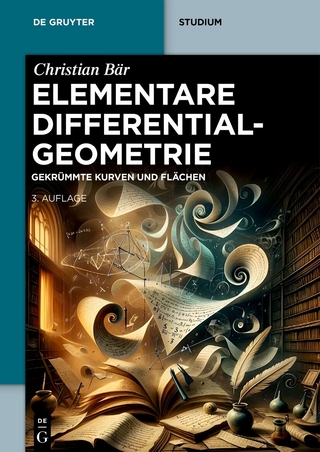Cycle Spaces of Flag Domains
Birkhauser Boston Inc (Verlag)
978-0-8176-4391-1 (ISBN)
This research monograph is a systematic exposition of the background, methods, and recent results in the theory of cycle spaces of ?ag domains. Some of the methods are now standard, but many are new. The exposition is carried out from the viewpoint of complex algebraic and differential geometry. Except for certain foundational material,whichisreadilyavailablefromstandardtexts,itisessentiallyself-contained; at points where this is not the case we give extensive references. After developing the background material on complex ?ag manifolds and rep- sentationtheory, wegiveanexposition(withanumberofnewresults)ofthecomplex geometric methods that lead to our characterizations of (group theoretically de?ned) cyclespacesandtoanumberofconsequences. Thenwegiveabriefindicationofjust how those results are related to the representation theory of semisimple Lie groups through, for example, the theory of double ?bration transforms, and we indicate the connection to the variation of Hodge structure. Finally, we work out detailed local descriptions of the relevant full Barlet cycle spaces. Cycle space theory is a basic chapter in complex analysis. Since the 1960s its importance has been underlined by its role in the geometry of ?ag domains, and by applications in the representation theory of semisimple Lie groups. This developed veryslowlyuntilafewofyearsagowhenmethodsofcomplexgeometry,inparticular those involving Schubert slices, Schubert domains, Iwasawa domains and suppo- ing hypersurfaces, were introduced. In the late 1990s, and continuing through early 2002, we developed those methods and used them to give a precise description of cycle spaces for ?ag domains. This effectively enabled the use of double ?bration transforms in all ?ag domain situations.
to Flag Domain Theory.- Structure of Complex Flag Manifolds.- Real Group Orbits.- Orbit Structure for Hermitian Symmetric Spaces.- Open Orbits.- The Cycle Space of a Flag Domain.- Cycle Spaces as Universal Domains.- Universal Domains.- B-Invariant Hypersurfaces in MZ.- Orbit Duality via Momentum Geometry.- Schubert Slices in the Context of Duality.- Analysis of the Boundary of U.- Invariant Kobayashi-Hyperbolic Stein Domains.- Cycle Spaces of Lower-Dimensional Orbits.- Examples.- Analytic and Geometric Consequences.- The Double Fibration Transform.- Variation of Hodge Structure.- Cycles in the K3 Period Domain.- The Full Cycle Space.- Combinatorics of Normal Bundles of Base Cycles.- Methods for Computing H1(C; O).- Classification for Simple with rank < rank .- Classification for rank = rank .
From the reviews:"Cycle spaces can be a useful tool in the study of real semisimple Lie groups, and the research monograph which is reviewed here is devoted to describing their features. The exposition … is in principle self-contained for a good graduate reader, who will also find a wealth of concrete examples. … the approach used by the authors throughout this monograph is based on a combination of group-theoretical methods … the result is an intriguing melting pot, opening interesting perspectives of interaction among different research branches." (Corrado Marastoni, Mathematical Reviews, Issue 2006 h)“A systematic exposition of the background, methods, and recent results in the theory of cycle spaces of flag domains. … The value of this progress in mathematics volume to a wide group of researchers … is indisputable. They all will admire the volume for the many new results presented for the first time. Your reviewer would strongly recommend that you spend a few hours with this volume long enough to familiarize yourself with its contents. You’ll be back for the details when you need them.” (Current Engineering Practice, Vol. 48, 2005-2006)
| Erscheint lt. Verlag | 12.12.2005 |
|---|---|
| Reihe/Serie | Progress in Mathematics ; 245 |
| Zusatzinfo | XX, 339 p. |
| Verlagsort | Secaucus |
| Sprache | englisch |
| Maße | 155 x 235 mm |
| Themenwelt | Mathematik / Informatik ► Mathematik ► Geometrie / Topologie |
| ISBN-10 | 0-8176-4391-5 / 0817643915 |
| ISBN-13 | 978-0-8176-4391-1 / 9780817643911 |
| Zustand | Neuware |
| Haben Sie eine Frage zum Produkt? |
aus dem Bereich




